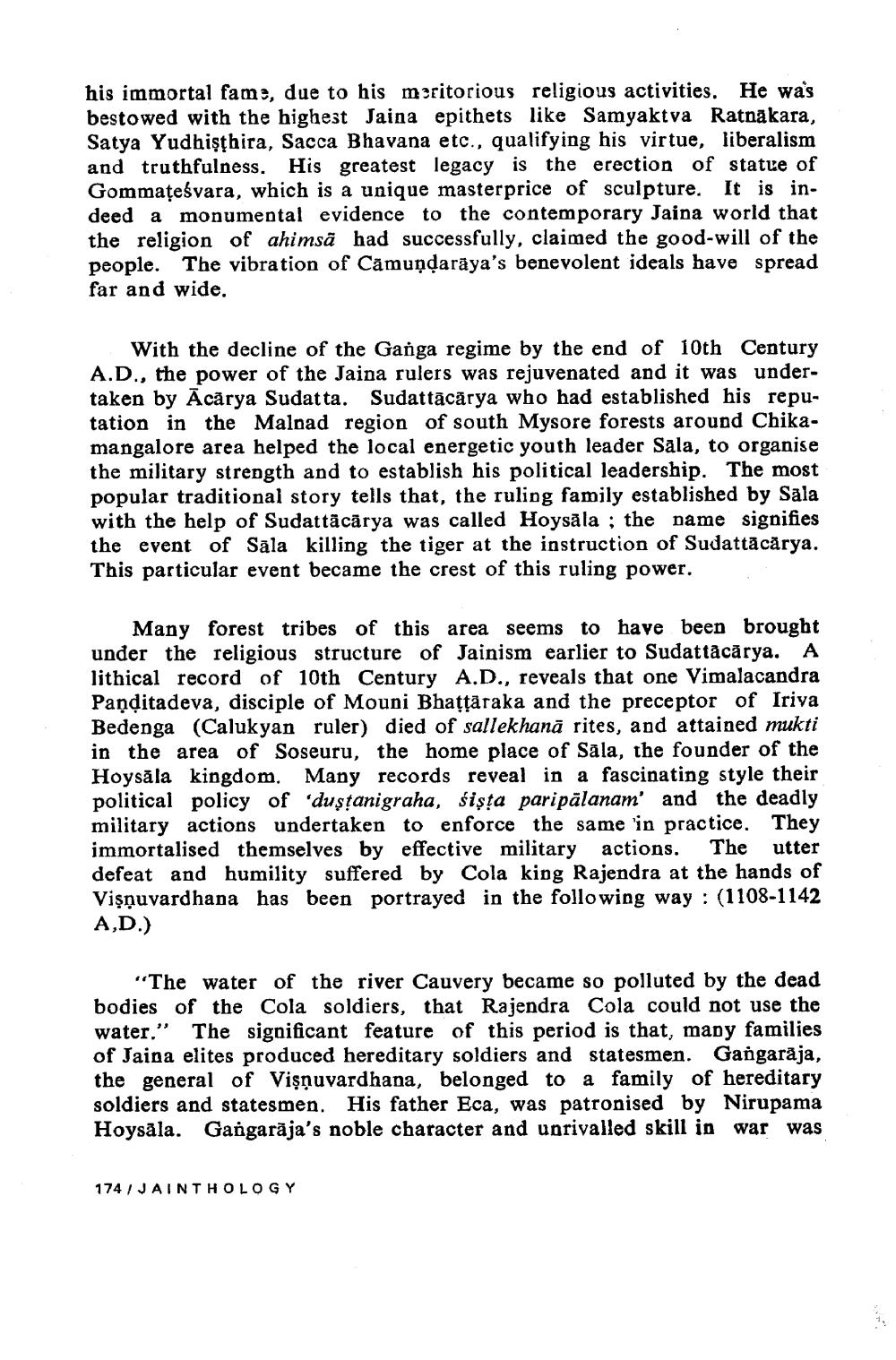________________
his immortal fame, due to his meritorious religious activities. He was bestowed with the highest Jaina epithets like Samyaktva Ratnakara, Satya Yudhisthira, Sacca Bhavana etc., qualifying his virtue, liberalism and truthfulness. His greatest legacy is the erection of statue of Gommatesvara, which is a unique masterprice of sculpture. It is indeed a monumental evidence to the contemporary Jaina world that the religion of ahimsa had successfully, claimed the good-will of the people. The vibration of Camuṇḍaraya's benevolent ideals have spread far and wide.
With the decline of the Ganga regime by the end of 10th Century A.D., the power of the Jaina rulers was rejuvenated and it was undertaken by Acarya Sudatta. Sudattacārya who had established his reputation in the Malnad region of south Mysore forests around Chikamangalore area helped the local energetic youth leader Sala, to organise the military strength and to establish his political leadership. The most popular traditional story tells that, the ruling family established by Sala with the help of Sudattacārya was called Hoysala; the name signifies the event of Sala killing the tiger at the instruction of Sudattācārya. This particular event became the crest of this ruling power.
Many forest tribes of this area seems to have been brought under the religious structure of Jainism earlier to Sudattācārya. A lithical record of 10th Century A.D., reveals that one Vimalacandra Paṇḍitadeva, disciple of Mouni Bhaṭṭāraka and the preceptor of Iriva Bedenga (Calukyan ruler) died of sallekhana rites, and attained mukti in the area of Soseuru, the home place of Sala, the founder of the Hoysala kingdom. Many records reveal in a fascinating style their political policy of 'duştanigraha, sista paripälanam' and the deadly military actions undertaken to enforce the same in practice. They immortalised themselves by effective military actions. The utter defeat and humility suffered by Cola king Rajendra at the hands of Viṣṇuvardhana has been portrayed in the following way (1108-1142 A,D.)
"The water of the river Cauvery became so polluted by the dead bodies of the Cola soldiers, that Rajendra Cola could not use the water." The significant feature of this period is that, many families of Jaina elites produced hereditary soldiers and statesmen. Gangarāja, the general of Visnuvardhana, belonged to a family of hereditary soldiers and statesmen. His father Eca, was patronised by Nirupama Hoysala. Gangaraja's noble character and unrivalled skill in war
174/JAINTHOLOGY
was




